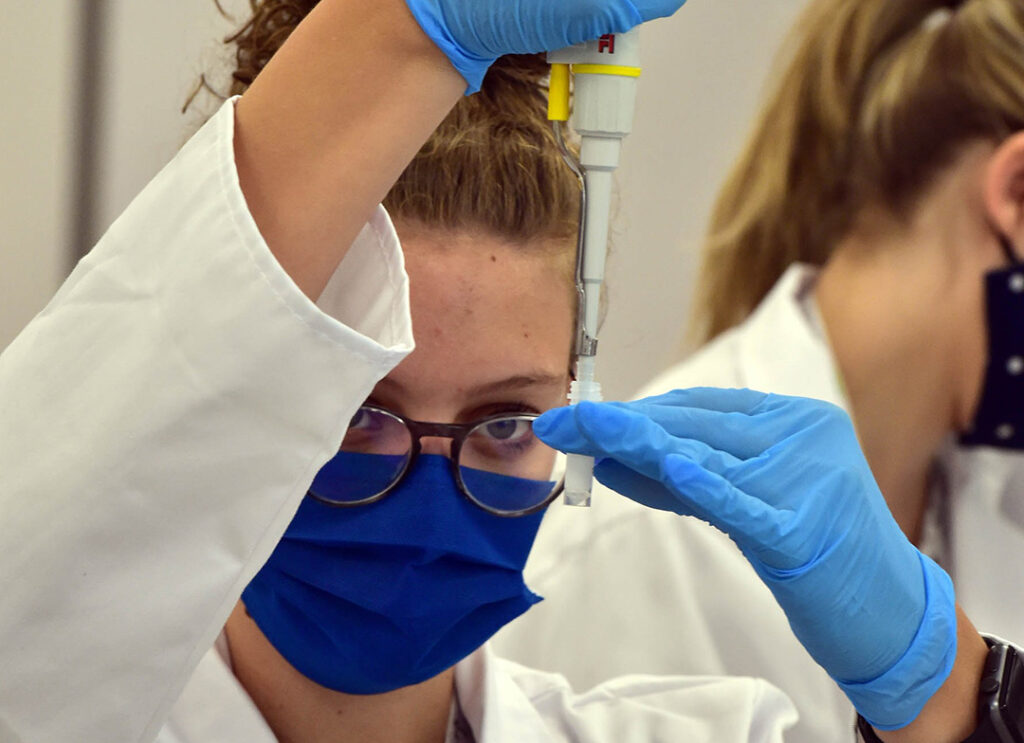ADF STAFF
Public health experts are tracking the spread of two new sublineages of COVID-19’s omicron variant and are growing concerned that the BA.4 and BA.5 infections might spread despite established immunity.
The sublineages are driving a sharp rise in cases in South Africa and Botswana, raising the question of whether they are leading to a fifth wave of infections.
Dr. Nicholas Crisp, deputy director-general of South Africa’s National Department of Health, told Bloomberg that a new variant will drive a fifth wave rather than the recently reported BA.4 sublineage of omicron that has turned up in wastewater samples examined by the National Institute for Communicable Diseases.
However, Dr. Tulio de Oliveira, director of the South Africa-based Centre for Epidemic Response and Innovation (CERI), recently suggested otherwise. CERI identified BA.4 and BA.5 and confirmed the existence of the first omicron variant before that.
“So, it looks that #COVID19 may be evolving differently and that we may not need a new variant to cause a new wave of infection,” de Oliveira posted in a Twitter thread regarding the new sublineages.
Studies done using blood samples show that up to 80% of South Africa’s population has been exposed to COVID-19 and, therefore, has some immunity.
That might not be enough to protect against the new sublineages, according to researcher Dr. Alex Sigal, a virologist at the African Health Research Institute in Durban, South Africa.
Sigal recently reported that the BA.1 version of omicron, which drove the fourth wave of infections in late 2021, is not immunogenic. That means that people infected with BA.1 received no protection from the BA.4 and BA.5 sublineages.
“BA.4/BA.5 escape, while not as dramatic as Omicron escape from vaccine or Delta immunity, is enough to cause trouble and lead to an infection wave,” Sigal wrote on Twitter.
Case positivity in South Africa has jumped from 4% to 19% with the growth of the new sublineages. Despite that, the potential new wave is likely to be less severe than previous waves, Sigal said.
As cases have increased, hospitalizations and deaths have not, according to South African epidemiologist Salim Abdool Karim.
It’s not clear whether the new sublineages will drive a new wave of infections worldwide, Karim told The Associated Press.
One trend tied to the new sublineages is raising concerns: the hospitalization of infected children — the return of a trend created by the first omicron-related wave, according to Helen Rees, executive director of the Reproductive Health and HIV Institute at the University of Witwatersrand.
The sharp rise in new infections in Southern Africa coincides with flu season as the southern hemisphere turns toward the cooler weather of autumn and winter. The growth of cases in South Africa alone has been enough to reverse Africa’s overall two-month decline, according to the World Health Organization’s Regional Office for Africa.
According to the Africa Centres for Disease Control and Prevention (Africa CDC), COVID-19 infections were down 7% from mid-March to mid-April, and deaths fell by 8% in that same period.
“Being ready for the next wave is something that we have to work collectively to ensure that preparations are in place,” Africa CDC Director Dr. John Nkengasong said during his mid-April briefing. “We cannot be complacent. We are still in a pandemic.”

